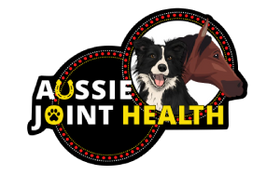In order to better understand horse foot structures, here's what we need to know.
A horse's hoof is its foundation. Horses' feet should be proportional to their size. A common problem with quarter horses and thoroughbreds is that their feet are too small to support their weight. The horse is subjected to a great deal of concussive force on a small surface, resulting in lameness.
Ideally, a horse's hoof wall should be thick enough to support its weight. Hooves must have healthy growth qualities and be pliable rather than dry. Several breeds are allowed to develop abnormally to achieve a specific purpose, such as Saddlebreds and Tennessee walkers.
Hoofs should be balanced as much as possible. There should be a similar distance between the Coronary bands on the medial and lateral sides of the wall. The transverse line crossing the longitudinal axis of the cannon bone should result in two 90-degree angles at the heel. Frogs and soles must be healthy to maintain proper contact with the ground. Hoof heels should be open and approximately one-quarter of the circumference.
For the front feet, the normal axis should be 45-50 degrees, while for the hind feet, the normal axis should be 50-55 degrees. When these axes shift, pathological changes in anatomical structures occur. Parallel lines should exist between the dorsal surface of the hoof wall and the pastern slope when viewed laterally. As the foot hits the ground, a lesser-than-optimal utilization of the fetlock shock-absorbing system will occur.
Listed below are terms you may have heard of or be experiencing with your horse's feet.
"Broken Back"
Refers to a foot with a long toe and a low heel. As a result, the deep digital flexor tendon and its associated structures are under more strain. When the horse moves, the angle will be less than 45 degrees, causing a delayed break-over. Therefore, the horse has a longer stride than opposed to one with a normal hoof/pastern axis.
"Broken forward"
If the angle of the axis in the front feet is greater than 50 degrees, the heel is high, and the toe is short. "Broken forward" is the term used to describe this axis. This results in a short stride and an uncomfortable ride for the rider. In turn, increased concussive force leads to the formation of ringbone and arthritis within the horses' joints.
"Coon-footed"
It occurs when the horse's pastern slopes away from the dorsal surface of the hoof wall. There is a break in the coronary band of the hoof. Horses are at high risk of injury to their sesamoid bone and flexor tendons.
"Club foot"
When the axis is greater than 60 degrees, it is called a club foot. If this trait is inheritable, it can either be unilateral or bilateral. Deep digital flexor tendon deformities are the most common cause of clubfoot deformities. It is also possible to have a problem with the suspensory ligament or the superficial flexor tendon. It is common for horses of this type to be unsound.
"Pigeon Toed"
A horse's feet turned towards the median plane are said to be pigeon-toed. During movement, the outside wall of a horse's hoof will carry most of its weight. As the inside wall grows, it appears to paddle and grows faster. While the foot moves, it will swing outward as it follows the flight path.
"Toed-out"
As the plumb line runs through the center of the foot, a toe deviating outward from the midline is called a toed-out conformation. There is a flared outer wall, while the interior wall is upright. "Winging" occurs when the affected limb interferes with the other limbs during flight. Consequently, tissue trauma and bone damage may result.
"Contraction"
Whenever a heel contraction occurs, a foot contraction follows. Depending on the situation, this may occur unilaterally or bilaterally. Front feet are more likely to experience heel contraction than hind feet. There is a generalized narrowing of the foot, especially around the heel. The sole of the frog has an unusual concavity, and the frog is generally receding and atrophied. It is possible that improper shoeing can lead to foot and heel contractures. Alternatively, the condition may be hereditary or caused by lameness elsewhere in the body. Any cause of this condition will usually negatively affect the horse's performance.
DISCLAIMER
All information on the Aussie Joint Health website is for educational purposes only. There is no diagnosis or treatment intended for individual animals in the Aussie Joint Health content. It is imperative that you address any questions or concerns you may have about your animal with your veterinarian. The information provided on Aussie Joint Health should not replace your relationship with your veterinarian. This blog post is intended to help you have a better conversation with your veterinarian about the appropriate treatments to use for your pet.

